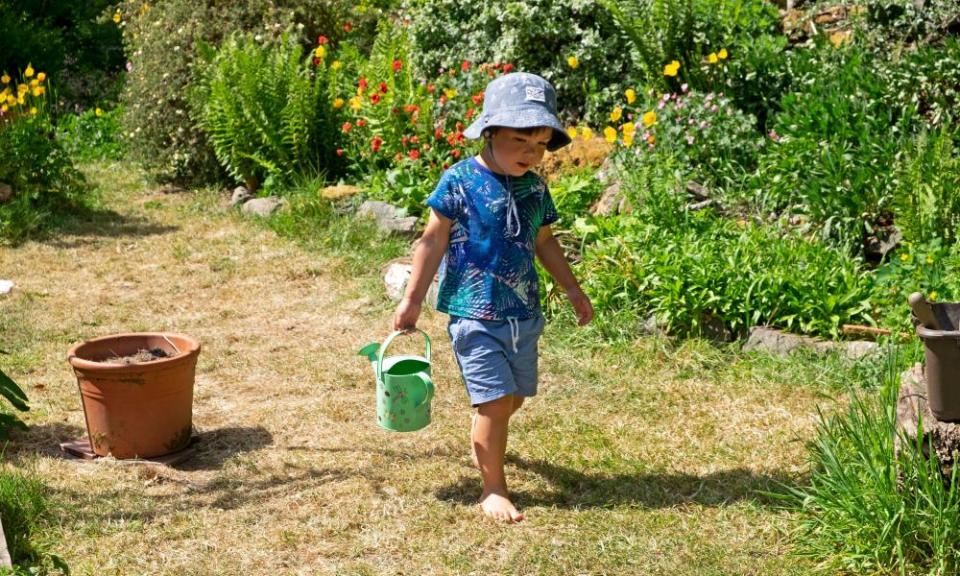Build an ark and ditch the pots: how to save your garden in a drought

With British gardens facing record temperatures, drought and hosepipe bans, it’s time for emergency measures. It’s particularly important because during drought, additional mains water is drawn from wild sources, affecting struggling wildlife. Here are some of the things you can do.
Be realistic
In times of drought there will be losses. To save water and sanity, prioritise plants to keep and plants to lose. Anything easy to grow from seed or cutting should be left and grown again next year.
Create a plant ark
Although Noah had excess water, he could only fit two of each species in the ark. If you have repeats of perennials, focus on saving one of each to divide or take cuttings from next spring, and sacrifice the rest (Biblical references end here).
Use trays
Place dishes, plates, oven trays, anything you can find under all plant pots, saving every drop.
Utilise shade
Reduce watering needs by moving pots to shady areas. Sun-loving plants will easily survive a few weeks like this. Drape shade netting over plants in the ground during the hottest times and over polytunnels and greenhouses (shade paint can be used on the latter).
What about vegetables?
If you’ve lovingly nurtured a tomato plant and it’s in the middle of cropping, pop it on the save list. Consider sacrificing less nutritional, water-guzzling edibles such as lettuce.
Water deeply and mulch
Rather than a little water every day, soak plants weekly to lock moisture deep into the soil and add a layer of compost on top to lock it in. Watch for plants wilting in the morning or evening as these are desperate for water. Plants wilting in the day can be misleading because it’s usually a natural response to heat, bouncing back as temperatures cool.
Soapy water
Organic gardeners may be reluctant to use dishwater on plants, especially those you eat, but during drought needs must. A 100% natural washing-up liquid helps for ornamental plants, saving clean water for edibles. Try not to use very soapy water on plants except in pots, they’ll be fine, but it can alter the composition of soil, having an unknown impact on vital microscopic soil life.
Is it OK if lawns go totally brown?
Lawn grasses evolved to survive drought by going dormant. Your lawn may look dead but it will make a miraculous recovery. Avoid wear and tear, and reseed worn patches in autumn. You can use soapy washing-up water on lawns but it’s a drop in a desert, best to save for other plants.
Can I ease off watering houseplants?
If your houseplant is a succulent or cactus, stop watering immediately. They’re built for drought. Leafier houseplants can suffer in scorching sun without enough water, move them away from windows a little to reduce water needs until the drought is over. Some, like ficus, may resent the move and shed some leaves, but will recover.
Time for change
Observe which plants suffer most in the drought and think about replacing them with plants that seem happier. Drought-tolerant plants include hylotelephium, achillea, fennel, rosemary, sage, salvias, meadow wildflowers and the ornamental grass Jarava ichu.
Plant in the ground
If you have lots of pots it’s far easier to grow plants in the ground. Roots will spread further and deeper for water.
Prepare for next time
Strike while the ground is hot, attach a water butt or tank to your drainpipes now, increasing your rain harvest for future droughts.

 Yahoo Movies
Yahoo Movies 